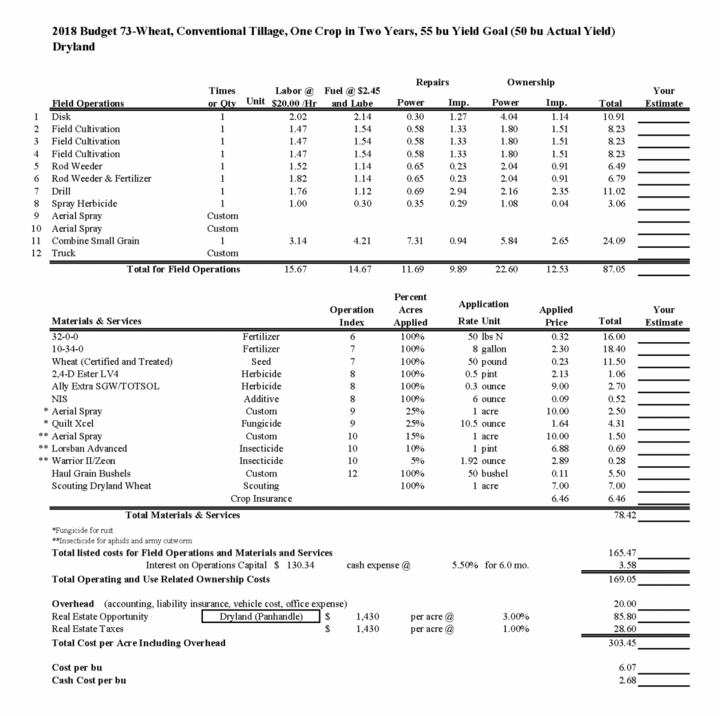Reducing Costs with the Goal of Maintaining Wheat Yield
The University of Nebraska has published seven wheat budgets online at cropwatch.unl.edu/budgets. The budgets use direct input cost estimates based on yield goals and crop production to estimate a cost per bushel.
What's in a Budget?
The 2018 Nebraska Crop Budgets also provide detailed information with tables for power, machine, labor, and input costs used in the budgets. For example, when percent acres applied is less than 100%, a material or service is applied on only part of the acres or part of the time.
These budgets are available in PDF and editable Excel® formats so you can customize them for your farming operation.
This article will analyze a dryland wheat budget using conventional tillage, with wheat planted every other year and a 55 bushel yield goal for dryland production in the Nebraska Panhandle. As with all crops grown in Nebraska, carefully analyzing costs and making adjustments where possible may be the difference in a positive return or not.
You’ll see in the wheat budget provided below, that total economic cost of production is $6.07/bushel. Cash costs per bushel total $2.68/bushel. Included in total costs are field operation expenses of $87.05/acre including fuel, repairs, machinery ownership or depreciation, and labor. Materials and services (direct input costs) totaled $78.42/acre. In addition, the budget includes overhead costs, real estate taxes and opportunity costs, plus there is an operating interest expense figure calculated using 5.5% for six months on total operations capital. Cash costs include materials and services (inputs), labor, fuel, repairs, and interest (see box).
Field and growing conditions each year can provide for the possibility of input variability. Carefully scouting the growing crop (scouting cost is included in the sample wheat budget) and using soil tests and production history data to determine site-specific soil nutrient needs is key, and then prudently determining pesticide treatments as needed in a timely and precise manner can make a difference in crop costs from year to year. Knowing where lower cost inputs can be utilized can vary from farm to farm, field to field, even acre to acre.
The wheat budget total costs include ownership and operating costs of equipment. Depending on acres farmed and your time availability, taking a careful look at machinery and equipment utilization may be in order. Are there certain machines such as a drill or combine that you could share ownership in with a neighbor to reduce ownership costs? Would there be less expense per acre to hire some of these operations done?
Having a handle on all costs that go into producing a crop can provide the best picture in looking at where cost savings can occur without sacrificing yield.


